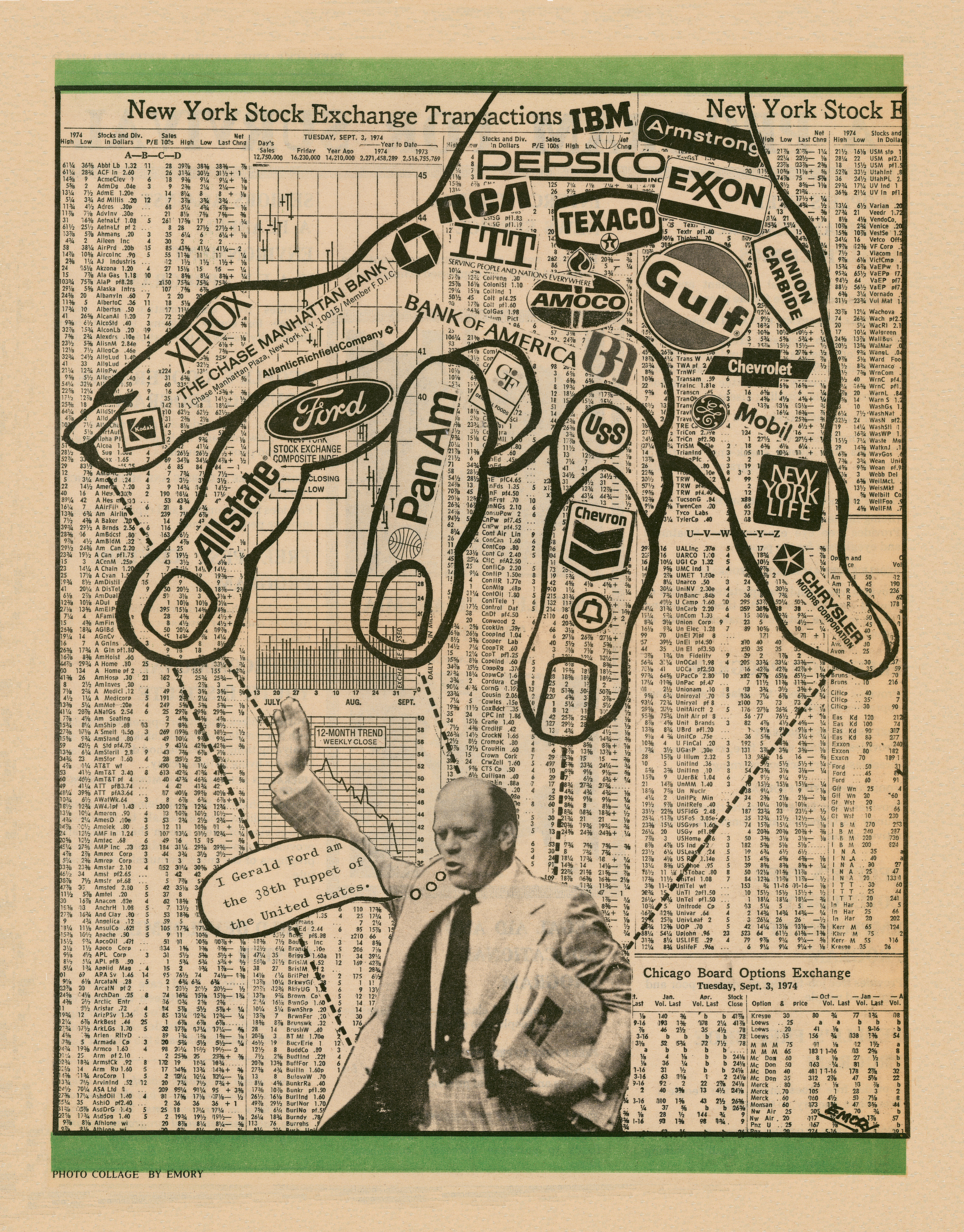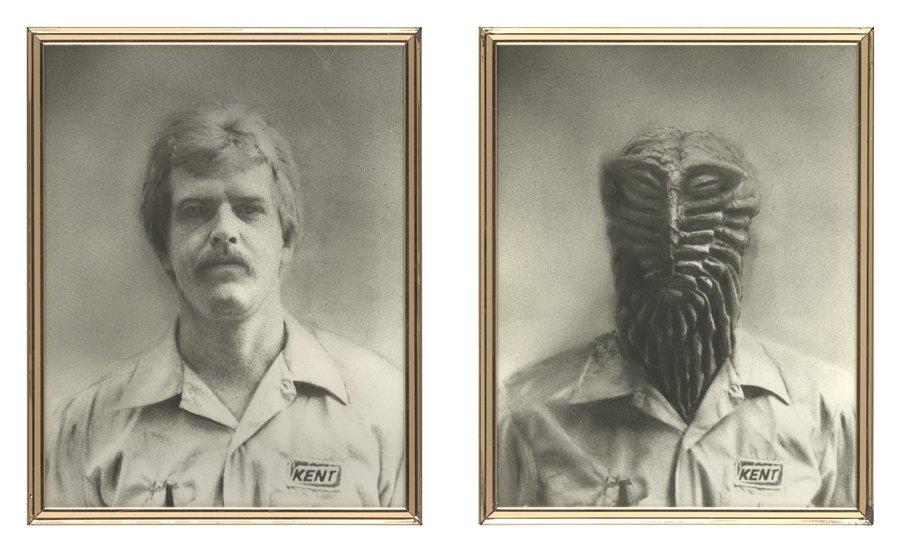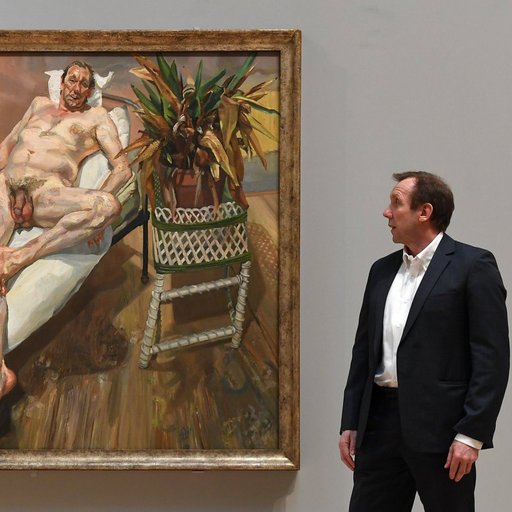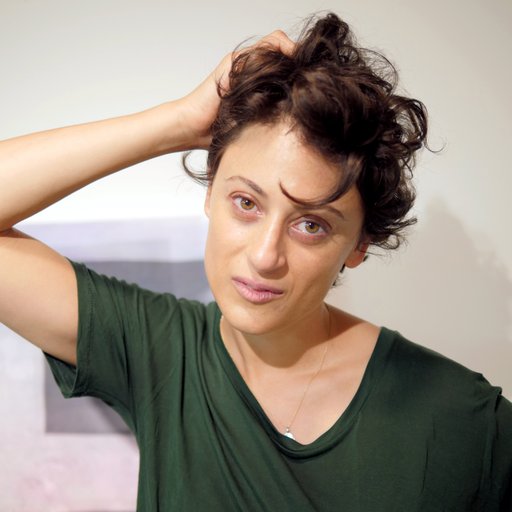Given our current landscape of fake news, alternative facts, and all manner of misinformation and paranoia, it seems alarmingly prescient for it to only have been 2010 when curator Doug Eklund first brought up the possibility of curating a show on art and conspiracy with the late iconoclast Mike Kelley. Inspired by a 1991 conversation between Kelley and fellow abjectionist John Miller discussing the lack of serious dialogue on the subject, the current exhibition "Everything is Connected: Art and Conspiracy" on the fourth floor of the Met Breuer is in some ways, largely curated by Kelley himself. Using a list of artists mentioned in that initial conversation as its jumping off point, the current show features 70 works by 30 artists, including Kelley and his contemporaries Jim Shaw, Raymond Pettibon, Sue Williams, and Tony Oursler, as well as recent additions like Trevor Paglen, Jenny Holzer, and Alessandro Balteo Yazbeck.
Setting its start date at 1969, this exhibition is the first to survey what is clearly a cultural zeitgeist—one whose distinctly American flavor finds itself deeply rooted in the counter-cultural brew of Watergate, Vietnam, moon landings, and Helter Skelter. Co-curated by Ian Alteveer at the Met's department of Modern and Contemporary art (Eklund and Alteveer joke about their good cop, bad cop dynamic), "Everything is Connected" shows two sides of the conspiratorial coin. There's certainly the expected gratification of some freaky, area 51 stuff—we're talking Free Mason gnomes, aliens, ancient civilizations contacting their secret society of progeny thru symbols in rocks, and all other manner of creatures from black lagoons. What's most striking about the show, however, are the moments in which we see how the term "conspiracy" has been used as a blanket to obfuscate the works of activists and marginalized communities looking to seek out their own truths beyond the ones that seek to oppress them. In other words, the moments in which conspiracy theory reveals itself to maybe, possibly be truth.
During the brief wait for the elevator that directly proceeded the following interview with Eklund and Alteveer, I'd mentioned my own father's morbid lust for conspiracy (he has a soft spot for entertaining those of the 9/11 ilk in particular, melted beams and all). As we filed in, heading back down to the exhibition, Doug Eklund enthusiastically insisted, "Please! Bring your weird uncles and dads and aunts! This show is really for them." Here, we discuss the relationship between art and conspiracy, American paranoia, and what our current moment of malleable truths means for art today. The exhibition is on view through January 6, 2019.
 Government of California (1969) by Peter Saul. Image courtesy of the Met Breuer.
Government of California (1969) by Peter Saul. Image courtesy of the Met Breuer.
Do you think that artists are more predisposed to altered or alternative realities than others?
Doug Eklund: Definitely! I think there's a lot that aligns the artist with the conspiracy theorist because both look at chaos and attempt to make order. There's a kind of natural alliance. Particularly with the Cal-Arts group—they were very interested in conspiracy theories, not so much for the subjects, but for this idea of a kind of alternate belief system that in some ways parallels how we might believe in art. So yeah, there's absolutely a connection.
Could you say they were more focused on the more metaphoric aura of the conspiracy theory?
DE: They were very interested in the whole subculture of conspiracy theorists as one of many subcultures in Southern California.
Ian Alteveer: If you look at that moment historically, when Mike Kelley, Jim Shaw, Sue Williams, and Tony Oursler were all at Cal-Arts, it's the Vietnam War era, post-Helter Skelter, Watergate... All that stuff is going on. In essence, what you have is a country that's changing significantly. It's a moment of crisis and out of that comes some of the most creative things.
DE: I think they approached conspiracy as a kind of modern form of myth or religion. It may not be literally true but it gets at deeper truths about how anxieties find a form.
To that point, I wanted to talk about the temporality of this exhibition. It starts in the 1960s but do you think conspiracy theory art could be something that's always been around? Like, could we find an Etruscan vase that delves into some ancient Italian conspiracies?
DE: Maybe! Part of it was that our description of the topic necessarily involved carving out a particular length of time and geographic boundaries. We cover America, Western Europe, and a little bit of Latin America from the '60s but you could fill a whole building looking at different cultures of conspiracy globally.
Even just thinking about Asia today and what "conspiracy" might mean there.
IA: It became very clear early on that within the limited space of the Breur's fourth floor, we would have to make some really tough choices. Part of the way you can keep things from getting way out of control when curating an exhibition is to set these parameters. In our case, those parameters felt very natural to the topic we were looking at. One of our catalog authors, Catherine Olmstead, would say that conspiracy is a particularly American thing, although one could certainly look at conspiracy theories in Asia and Africa.
DE: We suggest, with the Alfredo Jaar and Alessandro Baleto Yazbek, this relationship between America and Chile and Venezuela, respectively. One could do a great show from the reverse perspective of the countries we meddled with—that's a great sequel! People may regret that the global perspective isn't here, but what we were really trying to do was make a first attempt at the topic and so it had to be limited.
 The Black Panther illustration (September 21, 1974) by Emory Douglass. Image courtesy of the Met Breuer.
The Black Panther illustration (September 21, 1974) by Emory Douglass. Image courtesy of the Met Breuer.
There is a very specific aesthetic and aura to American conspiracy theories.
DE: Absolutely! The only other country I've found that is more conspiracy-obsessed is Italy. There are like... nine-hour documentaries on 9/11 over there. They just love it!
IA: There's also plenty of superstition in Italy too. My head is full of things you're not supposed to do from my great aunt in Milan—don't walk around with one shoe, two people can't make a bed together because the younger one will die...
DE: Also the politics, from as far back as the Borgias! But yes, apart from Italy, it is a particularly American phenomenon. There are so many essays on the conspiracy theories surrounding the Founding Fathers. It's something that is bred in the bone of America. For all of its centrist, liberal perspective, Richard Hofstadter's essay, The Paranoid Style in American Politics is still completely genius in historicizing the phenomenon.
IA: In speaking about the art in the show, it's really interesting to see the different modes of representation that come together. Certainly, the room with all of the people who went to Cal-Arts is fascinating because there are such concurrencies between their aesthetic practice. In the room that has Hans Haake, Alfredo Jaar, and Sarah Charlesworth, there's a certain kind of forensic aesthetic. It's somewhat taxonomic, cut and pasted, mixing text-and-photo... it's so signature but it's so great to see it all together.
DE: If you look at the entire show (and Mike Kelley and I were talking about this when we were first talking about this exhibition), you can track this work from the '60s to the present and at each moment, the art that's being made is marginal to the mainstream market and critical consensus at any given moment. There were always these kinds of artists that were on the periphery and investing these dominant artistic forms with a kind of real-world purpose.
Do you think it's important for artists to be beholden to truth and fact in this age of fake news and alternative facts?
IA: Hans Haake pointed out something interesting very early on in this show. From the beginning, he made it very clear that if he was going to be in the show, his work would not be confused with fiction. I think he pointed out to us that there are two halves of a coin in this exhibition—the first half is very fact-based work and is extensively researched. The second half is kind of the reverse—it's by artists who are trying to make sense out of things that they can't necessarily put together. In a way, there are two different modes with which you can look at this.
DE: And they overlap significantly. For spatial reasons, we couldn't include Stasi City by Jane and Louise Wilson at the Breuer, but it's up in the main building. That's a work where extensive research and the phantasmagoric completely overlap. Even Jim Shaw's hidden masonic lodge is no less deeply historically researched than the fact-based works but it is involved with the kinds of narratives that we construct in the absence of full information. When you don't have those facts or critical perspective, how do you imagine what's happened to you? So Shaw creates this mish-mash of all the different conspiracy theories. Free Masonry is of particular interest to him as one of the original three paranoias of American culture going back to the 17th century—it was the Catholics, Jewish people, and the Free Masons. Those were the three original boogie men.
The main thing we wanted to show, in terms of artists working today, is that these figures and tropes of conspiracy (fake news, Jim Shaw's reptiles) are things that go way back.
 Red Yellow Looming (2004) by Jenny Holzer. Image courtesy of the Met Breuer.
Red Yellow Looming (2004) by Jenny Holzer. Image courtesy of the Met Breuer.
On a scale of one to taping over the cameras and microphones on all of your electronic devices, how paranoid are you guys now?
DE: I wouldn't say that the show created the interest in conspiracy. I just tell people that I adhere to Thomas Pynchon's philosophy, which is that every weirdo in the world is on my wavelength. I'm not afraid of the crazy conspiracy theories. There's a real anxiety over them! I can even see it downstairs in the press room—people are like, "get that away from me, that's not me!" and that disavowal will certainly figure into the reception of the show. My feeling was wanting to tackle something that's endemic to our culture beyond the art world.
IA: That was one thing that I always impressed me about Doug's conception for the exhibition. I've always kept these conspiracy theories at a bit of an arm's length. So for me, the experience has been coming at this show as someone who's a little less paranoid ...but definitely, it's still there.
I also learned so many new things about artists that I thought I'd already known a great deal about. This helped me understand where their work is coming from even more, and also where my own questioning about the society we live in.
DE: And maybe I've learned how to reign in my wilder speculations.
RELATED ARTICLES:
Oil, Gin, and Possible Collusion with Russia? Behind Some of the World's Largest Artist Grants
























